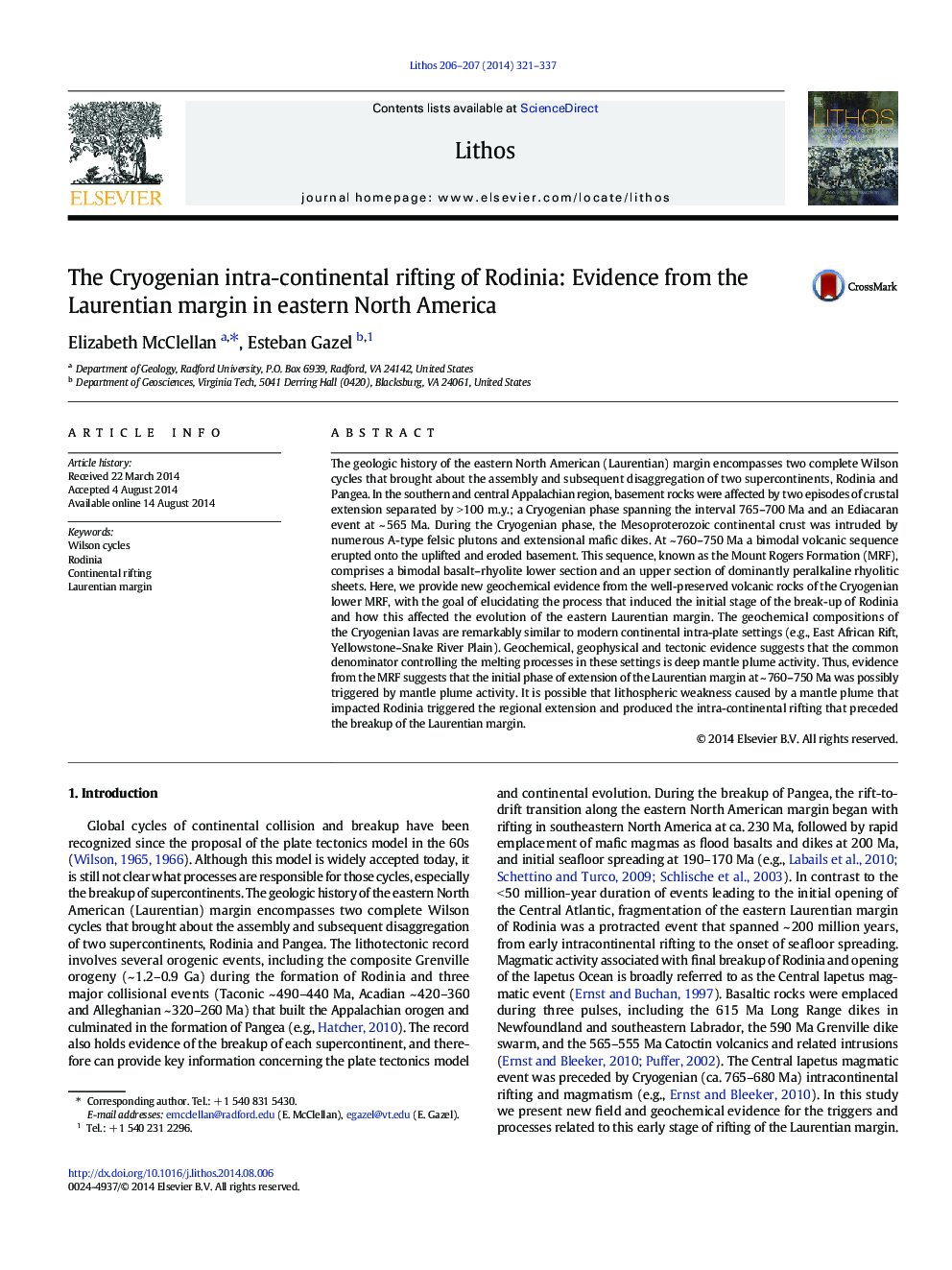| کد مقاله | کد نشریه | سال انتشار | مقاله انگلیسی | نسخه تمام متن |
|---|---|---|---|---|
| 4715955 | 1638672 | 2014 | 17 صفحه PDF | دانلود رایگان |
• We explore rifting of the eastern Laurentian margin during the break-up of Rodinia.
• Crustal extension occurred in two episodes, at ~ 765–700 Ma, then at ~ 565 Ma.
• Geochemical evidence indicates the initial phase was triggered by a mantle plume.
• Evidence for pre-rift doming and dike emplacement is consistent with a plume model.
The geologic history of the eastern North American (Laurentian) margin encompasses two complete Wilson cycles that brought about the assembly and subsequent disaggregation of two supercontinents, Rodinia and Pangea. In the southern and central Appalachian region, basement rocks were affected by two episodes of crustal extension separated by > 100 m.y.; a Cryogenian phase spanning the interval 765–700 Ma and an Ediacaran event at ~ 565 Ma. During the Cryogenian phase, the Mesoproterozoic continental crust was intruded by numerous A-type felsic plutons and extensional mafic dikes. At ~ 760–750 Ma a bimodal volcanic sequence erupted onto the uplifted and eroded basement. This sequence, known as the Mount Rogers Formation (MRF), comprises a bimodal basalt–rhyolite lower section and an upper section of dominantly peralkaline rhyolitic sheets. Here, we provide new geochemical evidence from the well-preserved volcanic rocks of the Cryogenian lower MRF, with the goal of elucidating the process that induced the initial stage of the break-up of Rodinia and how this affected the evolution of the eastern Laurentian margin. The geochemical compositions of the Cryogenian lavas are remarkably similar to modern continental intra-plate settings (e.g., East African Rift, Yellowstone–Snake River Plain). Geochemical, geophysical and tectonic evidence suggests that the common denominator controlling the melting processes in these settings is deep mantle plume activity. Thus, evidence from the MRF suggests that the initial phase of extension of the Laurentian margin at ~ 760–750 Ma was possibly triggered by mantle plume activity. It is possible that lithospheric weakness caused by a mantle plume that impacted Rodinia triggered the regional extension and produced the intra-continental rifting that preceded the breakup of the Laurentian margin.
Journal: Lithos - Volumes 206–207, October 2014, Pages 321–337
